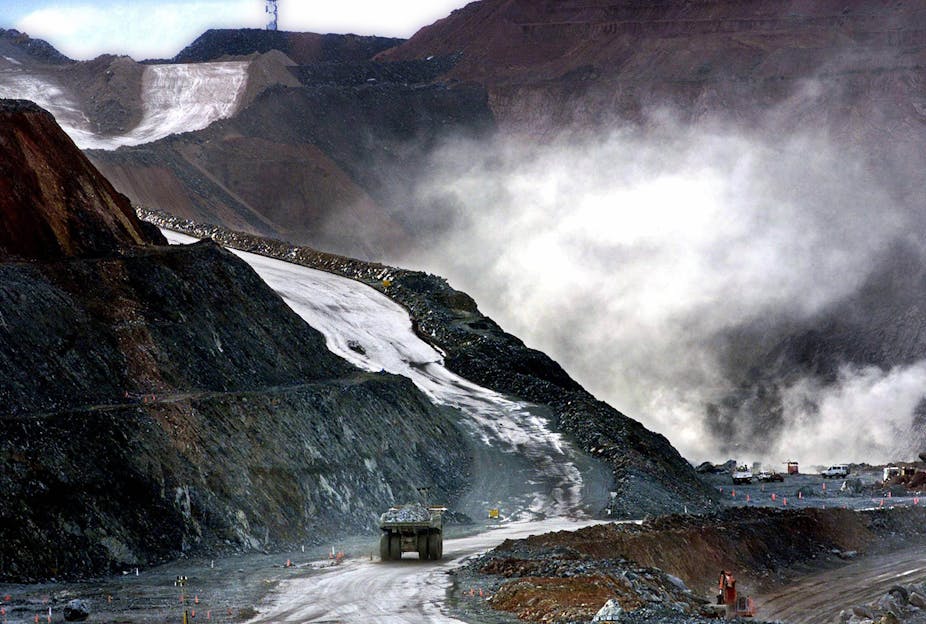Even as Australians are being warned to expect a dramatic fall in gross domestic product thanks to a larger than expected drop in the trade surplus, we still have a lot to be thankful for.
Fundamentally, Australia has survived the global financial crisis better than most other countries, with our banking system and national accounts in good shape compared to the United States and many European nations.
Much of the credit should be given to China and its unprecedented - and continuing - level of demand for our metals.
The outlook for the Australian economy remains generally positive, with low unemployment and increasing demand for commodities and investment in mining and energy projects will continue.
But the question increasingly looms: just who are the winners - and losers - in our multi-speed economy?
There is no doubt that for those individuals and businesses connected to the mining and resources sector times are good.
According to the WA Department of Mines and Petroleum, 63% of all private new capital investment in Australia’s minerals and energy sector was invested into WA in 2010.
In 2011 there were over $170 billion worth of projects either under construction or awaiting final investment decisions in WA alone.
Demand for skilled labour within the minerals and energy sector is anticipated to peak around 2012 as major projects commence.
However, steady growth in jobs demand in the sector is anticipated well into 2014. Pay rates will remain high as a result.
For resource rich states such as Western Australia and Queensland, the impact of the commodities boom has been profound. Rapid population growth rates fuelled by the boom saw Perth and Brisbane property prices soar over the past decade.
Even commercial property values were amongst the highest in Australia just prior to the GFC.
At the end of March 2011 the median house price for Perth was $480,000, compared to $300,000 in 2005 and around $250,000 in 1999.
It also put Perth property values close to those of Sydney which had a median price of $595,745 in the same period, although recent figures show this has dropped dramatically.
Property owners and landlords will still join the winners list along with those working within the mining and resources sector. Yet for many others the picture is less rosy.
First home buyers and those seeking to rent are finding it difficult; particularly in areas directly impacted by the mining boom.
For example, in the mining centres of Karratha and Port Hedland the median house prices in early 2011 were $795,000 and $750,000 respectively.
Even Broome had a median house price of $600,000 due to the decision to build a major LNG hub at nearby James Price Point. While the median weekly rent in Perth was $380, in Broome it was $545.
High rents and housing prices continue to cause concerns for the Reserve Bank. Despite a minor dampening of prices, the overall trend has been up.
Australian house price rises have been significantly above the OECD average since 1990. It has also left many lower income households behind in the home ownership stakes. Rising immigration driven by the demand for skilled labour will only serve to push up housing prices.
Small businesses seeking to rent or buy land and employ skilled labour are negatively impacted by rising property and wage levels. For exporters outside the mining and resources sector the high Australian dollar remains another concern.
The rising Aussie dollar has placed significant pressure on Australia’s manufacturers as well as such sectors as tourism and education.
In 2009 the education sector contributed $18.6 billion in export income to the national economy. It was ranked as the third most important export industry behind coal and iron ore. This situation has changed dramatically in the past 18 months.
According to Australian Education International (AEI) international student enrolments in VET fell by 12.2% during 2010 and by 20.6% in the ELICOS or English language training sector. Only university enrolments showed positive growth of around 7.6%.
Another problem created by the resources boom is the pressure it places on infrastructure. An efficient, internationally competitive economy requires good roads, rail, ports and air transport, plus excellent telecommunications.
Despite a decade of economic growth Australia has a serious deficit in infrastructure. A lack of investment in the 1980s and 1990s was compounded by the boom of the past decade.
As the population rises and housing demand increases, Australia’s cities will require significant investment in new infrastructure. Water supply, sewerage and power generation infrastructure are all areas in need of major new investments.
Australians have benefitted from the boom - but the benefits need to be shared.
Better urban planning, more capital investment in public works and a more equitable distribution of the wealth generated by the mining and resources sector are critical.

